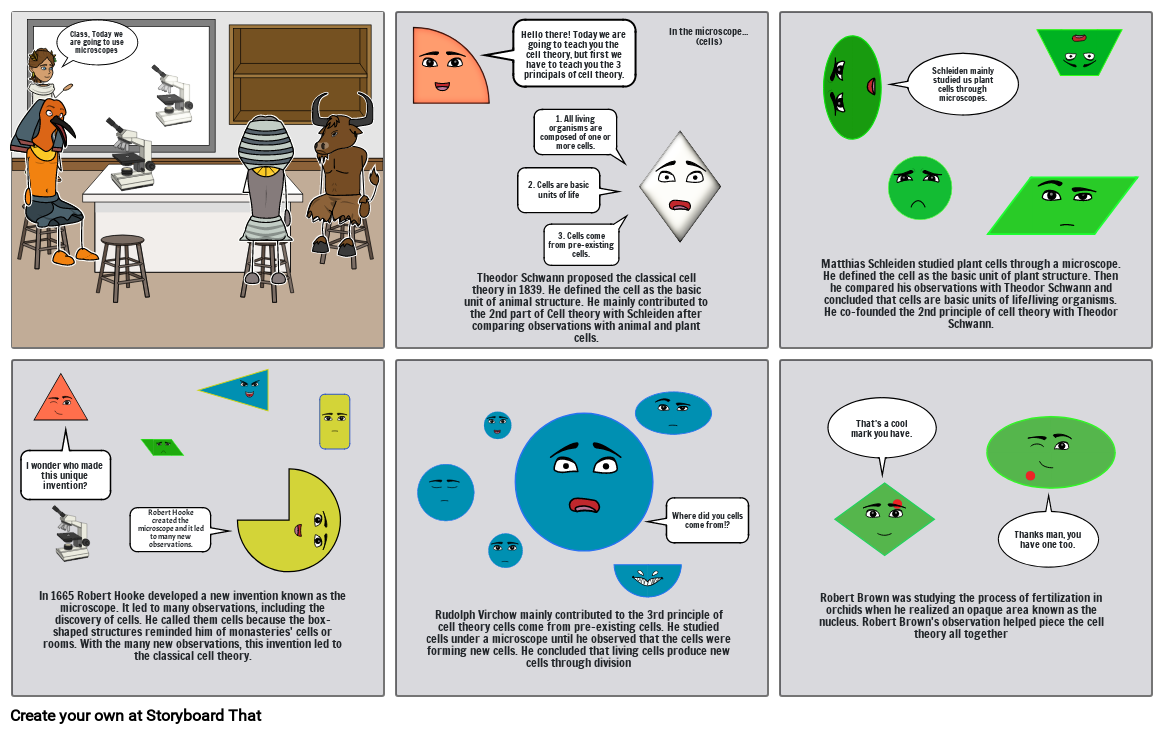Owen Burke

Storyboard Text
- Class, Today we are going to use microscopes
- Theodor Schwann proposed the classical cell theory in 1839. He defined the cell as the basic unit of animal structure. He mainly contributed to the 2nd part of Cell theory with Schleiden after comparing observations with animal and plant cells.
- Hello there! Today we are going to teach you the cell theory, but first we have to teach you the 3 principals of cell theory.
- 3. Cells come from pre-existing cells.
- 2. Cells are basic units of life
- 1. All living organisms are composed of one or more cells.
- In the microscope...(cells)
- Matthias Schleiden studied plant cells through a microscope. He defined the cell as the basic unit of plant structure. Then he compared his observations with Theodor Schwann and concluded that cells are basic units of life/living organisms. He co-founded the 2nd principle of cell theory with Theodor Schwann.
- Schleiden mainly studied us plant cells through microscopes.
- I wonder who made this unique invention?
- In 1665 Robert Hooke developed a new invention known as the microscope. It led to many observations, including the discovery of cells. He called them cells because the box-shaped structures reminded him of monasteries' cells or rooms. With the many new observations, this invention led to the classical cell theory.
- Robert Hooke created the microscope and it led to many new observations.
- Rudolph Virchow mainly contributed to the 3rd principle of cell theory cells come from pre-existing cells. He studied cells under a microscope until he observed that the cells were forming new cells. He concluded that living cells produce new cells through division
- Where did you cells come from!?
- Robert Brown was studying the process of fertilization in orchids when he realized an opaque area known as the nucleus. Robert Brown's observation helped piece the cell theory all together
- That's a cool mark you have.
- Thanks man, you have one too.
Over 30 Million Storyboards Created

